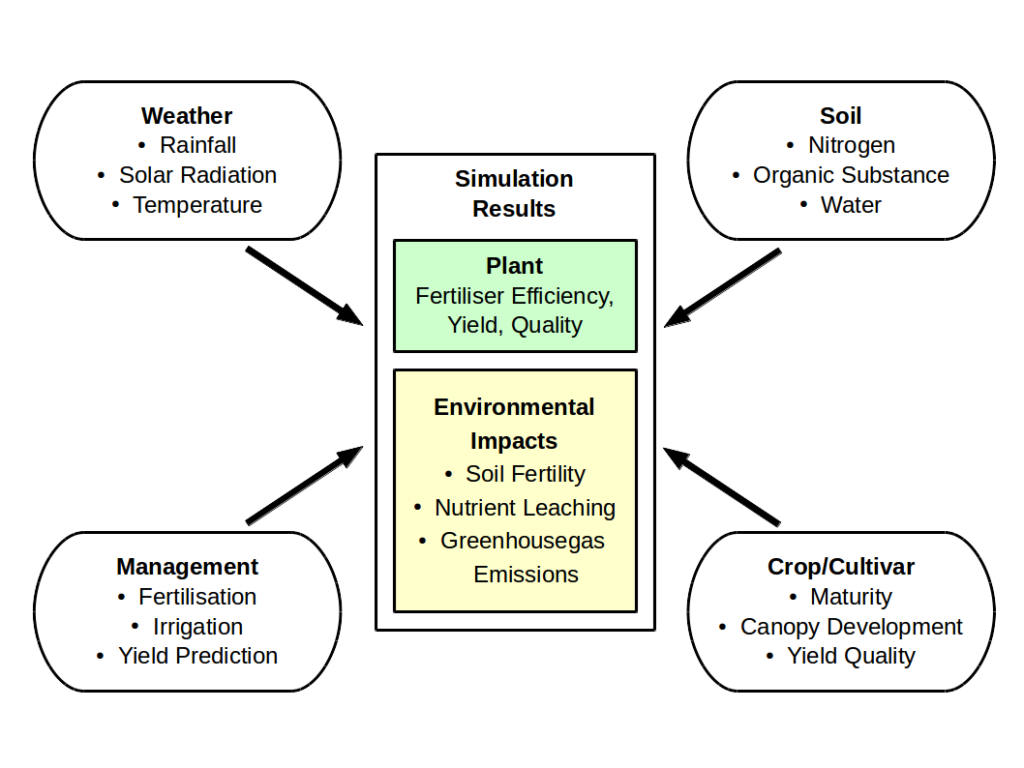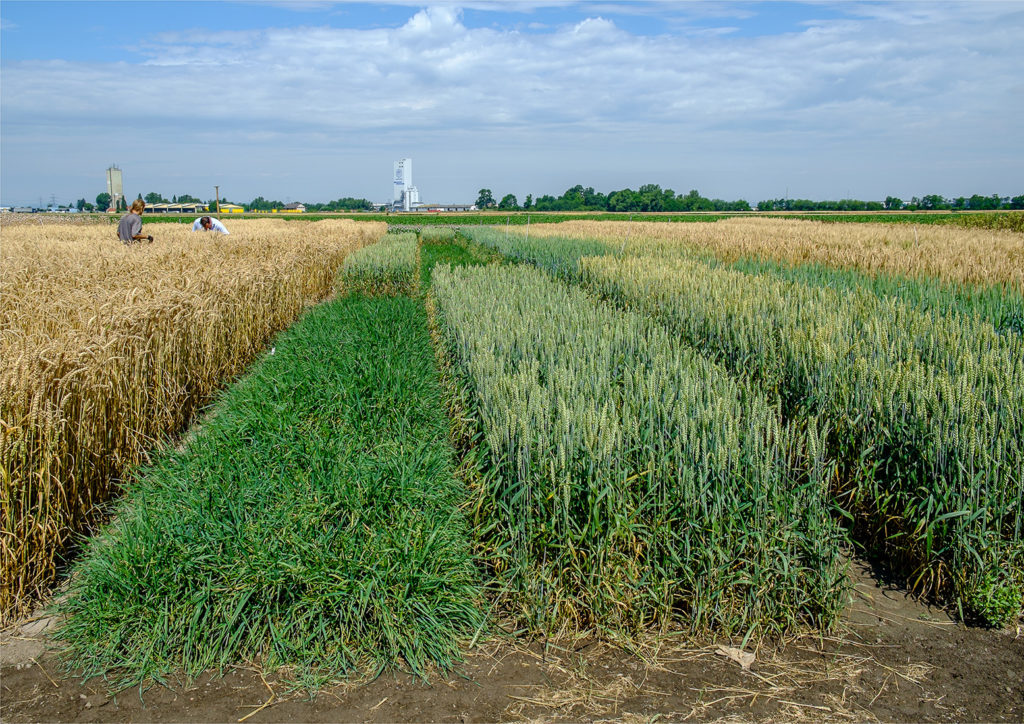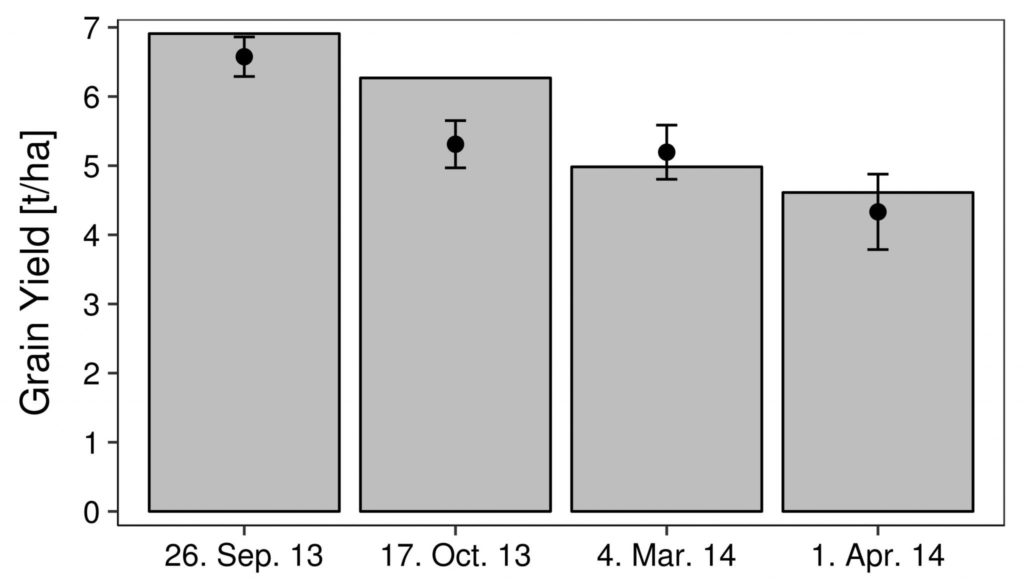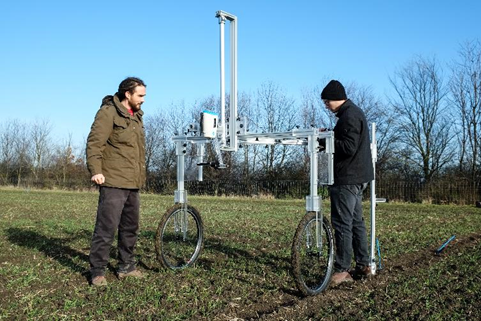Smart farming with crop growth models
What are crop growth models?
Process-based crop growth models are computer software programs that can simulate daily growth (e.g. biomass, yield) and development (e.g. emergence, flowering, harvest) of crops such as wheat, maize or potato. These models have been developed by scientists worldwide over the last 40 years. As a result, they have now reached a high degree of maturity, so that they can be confidently applied to support agricultural management practices (e.g. fertiliser recommendation, irrigation, crop rotation planning).
How do crop growth models work?
Depending on soil characteristics, weather conditions and crop species, crop models calculate the daily growth of biomass in the individual plant organs (stems, leaves, roots, grains/tubers, etc.) as well as the progress of plant development from sowing to maturity (Figure 1). In addition, crop models account for important processes in the soil (water and nutrient availability) in order to simulate crop growth during a whole growing season. Moreover, an advanced crop model, as the one used in FARM/IT, calculates nitrogen mineralisation, leaching and volatilisation depending on precipitation and soil moisture content. Nitrogen deficiency and drought stress reduce crop biomass growth and yield.
Figure 1: Illustration of the components of a crop growth model.
Which data do crop growth models need?
For predicting growth and yield formation, a crop model needs information about:
• Soil: How much water can the soil store? How much organic matter and nitrogen are available in the soil?
• Crop: which variety is sown? What are the maturity time, yield potential, and other characteristics of the variety?
• Management: What is the planting date? When and how much is the crop fertilised and irrigated?
• Weather: What is the temperature pattern during the growing season? How much is the precipitation, how strong is the solar radiation?
Figure 2: Wheat field experiment at Groß-Enzersdorf (Marchfeld) with four sowing dates and two cultivars in June 2014.
How can crop growth models be adapted to local conditions?
For accurate simulations, crop models need to be adapted to local crop varieties and environmental conditions. This so-called “model parameterisation” is an important and time-consuming process in order to achieve reliable simulation results for the Austrian site conditions. Parameterisation means defining the properties of crop and soil in terms of numerical values (the parameters). Since individual traits, such as crop yield, are affected by several different parameters, it is necessary to consider the complex and interacting plant growth and soil processes. Only then can the parameterised model be applied for supporting management practices. In the FARM/IT project, a process-based crop growth model (iCrop, Soltani and Sinclair 2012) is being developed and parameterised for the most important soils and crops in Austria. For this, data from several detailed field trials of the University of Natural Resources and Life Sciences, Vienna (BOKU) as well as external long-term experimental data with winter wheat, maize, sugar beet and potato will be used.For example, iCrop has been parameterised for the wheat variety Xenos, grown at four sowing dates in 2013/14 in Groß-Enzersdorf (Marchfeld, Figure 2). The simulation results for crop development (Figure 3) and yield (Figure 4) are in good agreement with the field data.
What are the applications of crop models in FARM/IT?
Application: Optimising nitrogen fertilisation in winter wheat
In winter wheat grown in Austria, the question arises in the spring time, as to how much nitrogen fertiliser should be applied. To answer this question, the iCrop model can be applied to simulate biomass growth and nitrogen uptake of crops by the time of scheduled fertilisation. A spectral sensor is then used to measure the nitrogen content of the crop in the field. Using these information, iCrop can make a season- and site-specific nitrogen fertiliser recommendation.
Application: Crop yield forecasting
Predicting crop yield a few weeks before the harvest is extremely important for the agricultural processing industry. The FARM/IT project will develop an advanced software based on iCrop and satellite data to make accurate regional yield forecasts for potato, sugar beet and wheat.
Figure 3: iCrop simulations (lines) vs. field observations (points) of the development of the wheat cultivar Xenos in Groß-Enzersdorf.
Figure 4: Wheat (cultivar Xenos) grain yield in Groß-Enzersdorf, simulated with iCrop (grey bars) vs. field observations (points).







